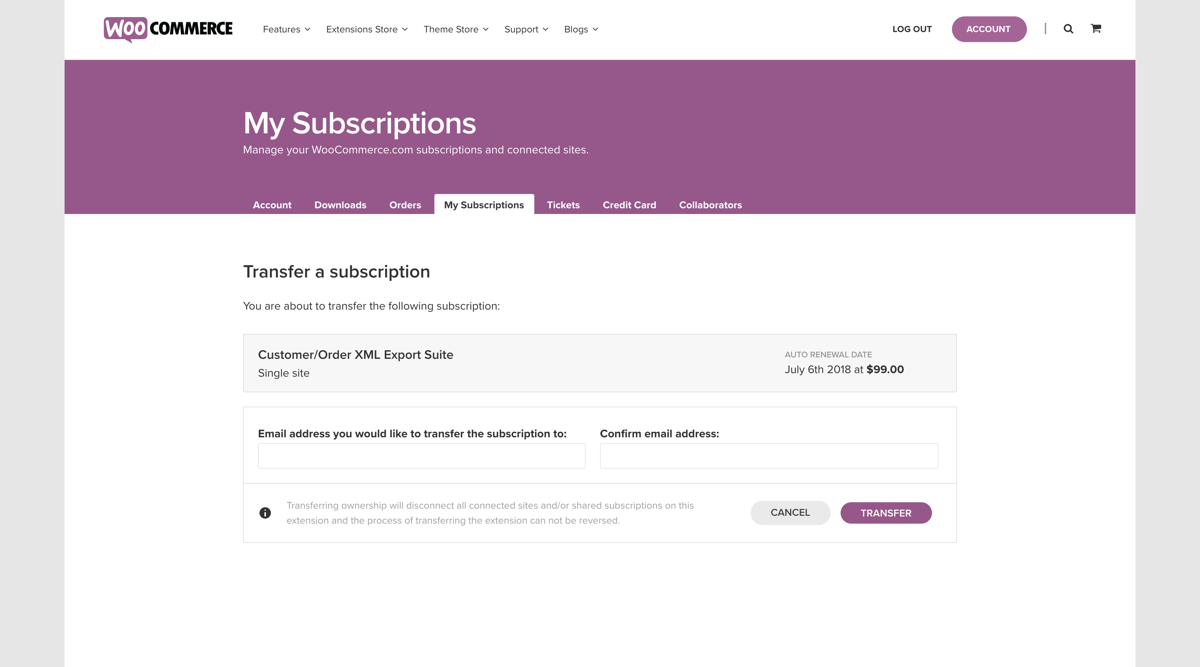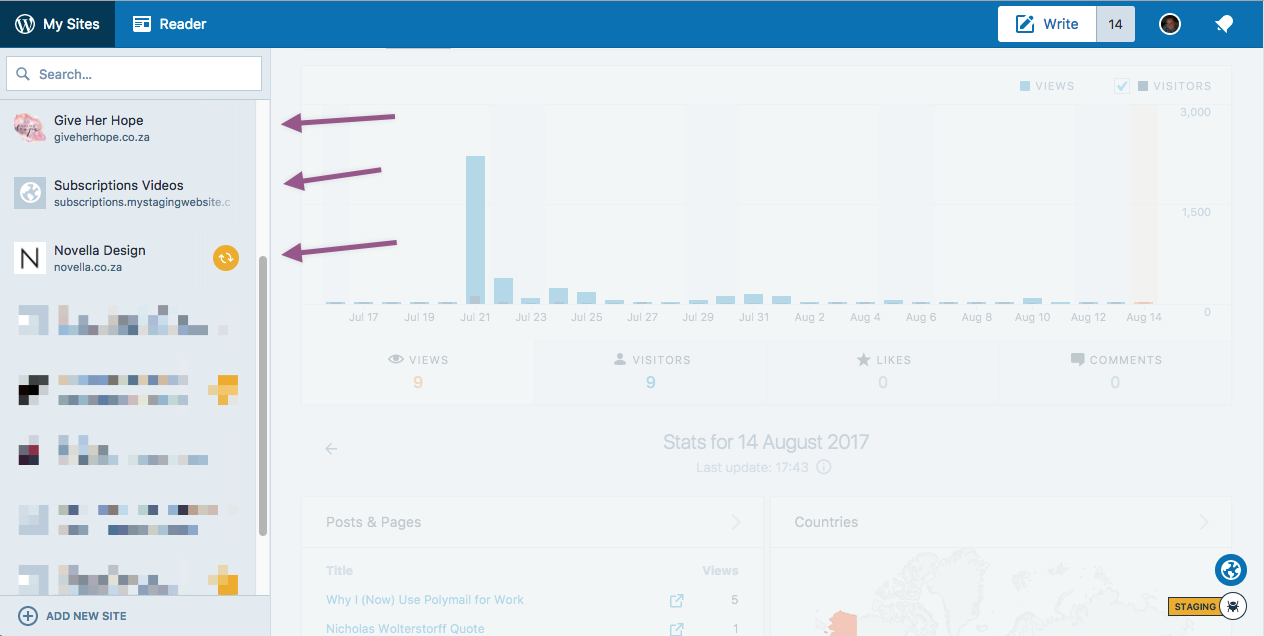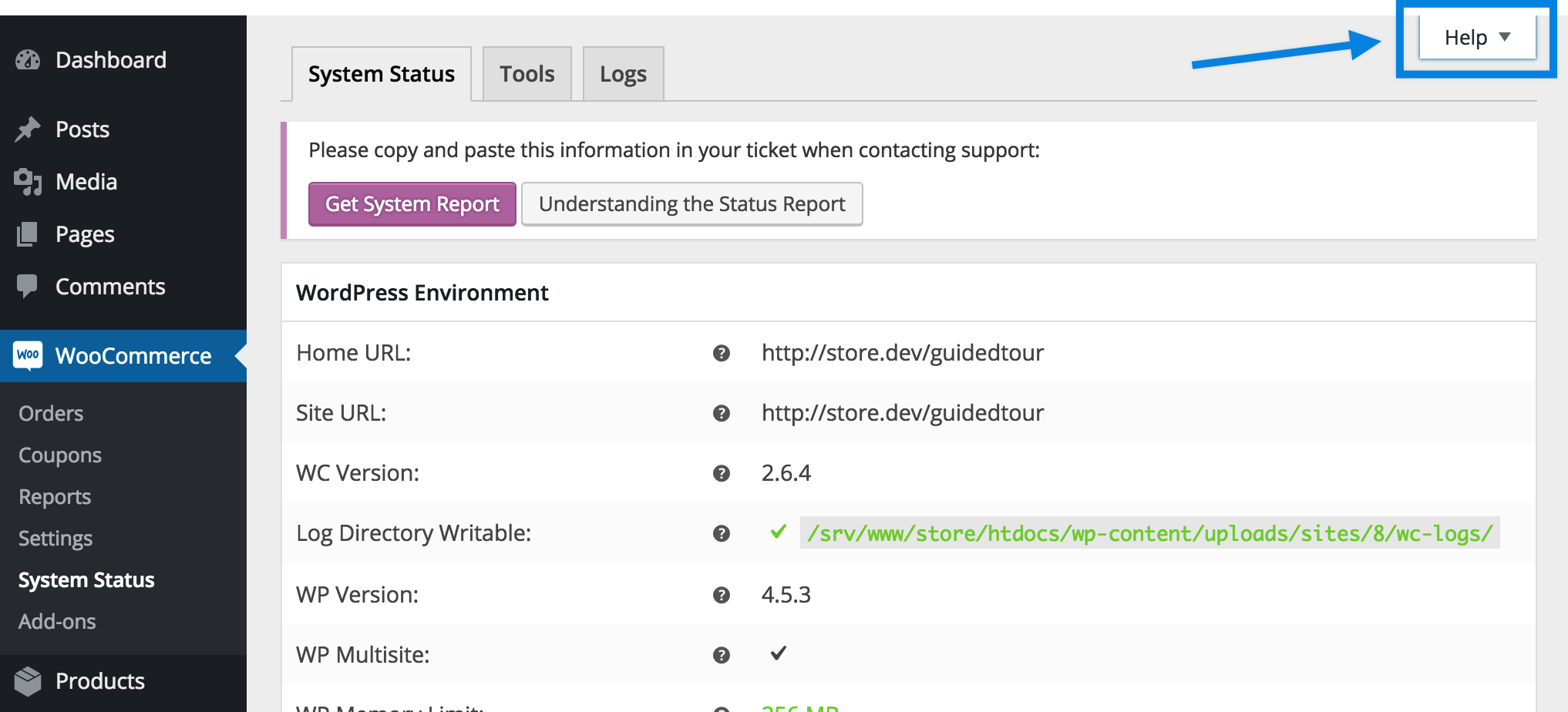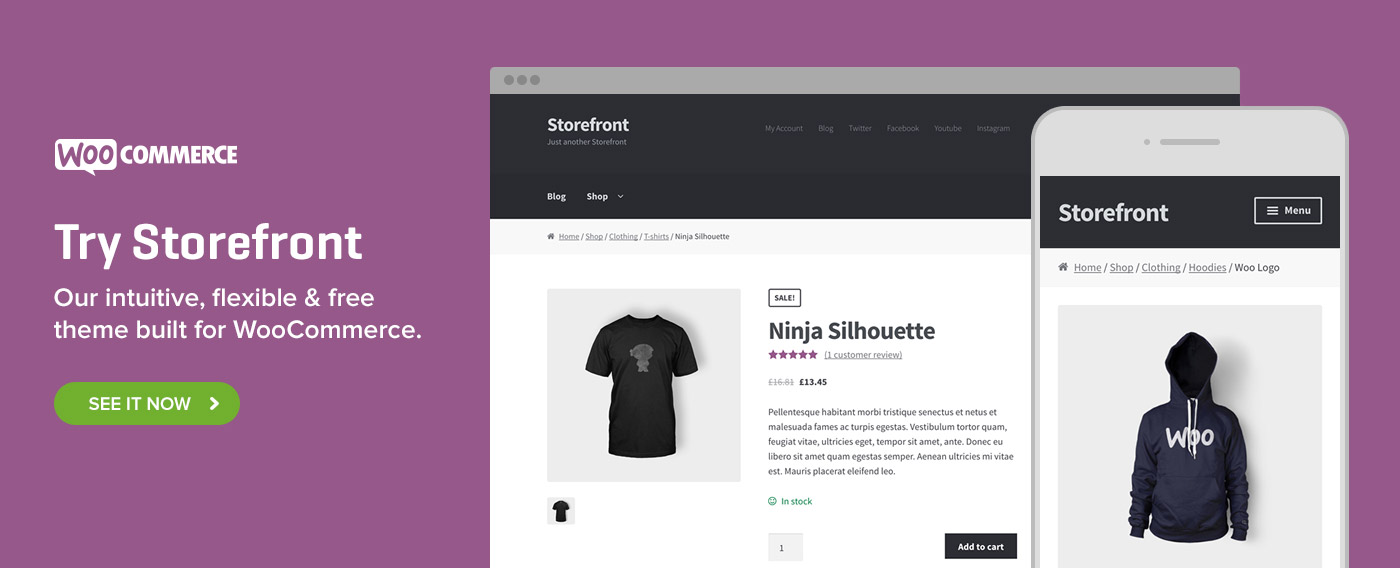Whether you’re just starting an ecommerce business or considering a rebrand, one of the most…
Four principles for successfully handing over a store to your customers

Sometimes we’re under the impression that finishing a WooCommerce development project is the end of the road, but that’s really just the beginning. When you hand over a site it’s the start of that store’s life cycle and, as a developer, you likely will not be the most important person on the store anymore. The store owner and their customers will be.
At least, they should be.
Upon chatting to a lot of developers, it becomes clear very fast that it can be challenging to hand over a project successfully. What does that even mean in the first place?
Read on for tips on handing over a store successfully to your customers.
1. Aim to avoid surprises (for the both of you)
You and your customer may run into surprises about a myriad of things: the costs of certain aspects, the expectations in terms of maintenance, the state of the finished product, and so on.
One of the best ways to avoid this is to be clear upfront. Set expectations and clear boundaries for the project. The areas where things may go wrong are almost always related to money and time.
Who pays for the hosting and the software, for example? It’s often a lot easier, as the developer, to purchase all of these things for your customer, but that also might lock them in. If their registration goes through you, it’s then very difficult for them to use someone else in the future, or fully take over themselves.
It could also become a hassle for you when it’s time to renew the software prices and you need to bother your clients for that. They might have been under the impression that what they paid you covered all of it.
You can prevent this, at least to a degree, by doing the following things:
- Explain which costs are involved, apart from your time, and what they can expect on a monthly and annual basis.
- Make a deliberate decision on the accounts involved. If you’re planning to stay involved after the development stage is finished, you may want to purchase everything through your own accounts. In almost every other case, having your customer purchase them will be a smarter choice.
- Explore your service provider’s options for account sharing and subscription transfer.
Set expectations and clear boundaries for the project. The areas where things go wrong are almost always related to money and time.
If you’re purchasing products from WooCommerce.com, we have a function for subscription access-sharing called collaborators. You can have your customers purchase the extensions they’ll need and add you as a collaborator which gives you access to the downloads, subscriptions, and orders. Read more about adding collaborators here.
We also offer the option to transfer WooCommerce.com subscriptions. This means the reverse is possible, too – you can purchase WooCommerce extensions for your customers and then transfer that same subscription to them. This way you get the ease of being the owner during the development process, whilst the client’s has the benefit of ownership after that stage.

Finally, define the scope of the project. Customers without prior knowledge will likely assume that maintenance is included in the setup. You’ll need to clarify that for them from the very beginning if you want to avoid misunderstandings. Of course, it’s your choice whether to pitch additional maintenance contracts to them, but this might be a good plan as it generates a stable income. You could even set up your own WooCommerce Subscription store to have your clients pay a monthly maintenance fee.
Especially, if you’re planning to run a maintenance contract with your customers, it might be wise to also install a plugin – for example, Jetpack – that gives you a quick overview of each of the different stores you manage.
In the screenshot below you can see that a self-hosted WooCommerce site is in need of an update. Using Jetpack, you can view all your websites on WordPress.com easily.

2. Remember: eCommerce is difficult
With each new release of WooCommerce, we aim to make store management as simple as possible, but the truth of it is that eCommerce is difficult. Even if we ignore the technicalities of setting up shop there are still many practical aspects that are tough, with payments, taxes, and shipping probably being the most difficult parts.
It starts with the product selection and creation; products are a custom post type with a lot of extras, all of which are necessary for running a successful WooCommerce store. If you, for example, do not explain the importance of product descriptions, you customer might complain about the lack of SEO.
Payments are another difficult part. There are many payment gateways, and all of them have their strengths – and their weaknesses. Help your client out with the choice of payment gateway. I’d suggest having at least two options ready that you’ve worked with before and you’re happy with, but at the same time also being open to their specific requirements.
Closely related to payments are taxes. Every country, every region has its different set of rules and while WooCommerce can import the basic rules, you should encourage your customers to consult a tax advisor. The same goes for you: you can assist by setting up these basic rules and help them get started with some useful links, but at the end of the project, be sure to sign off on tax configuration. You are a developer, not a tax expert – your customer should get the final responsibility for this and I’d highly recommend to put this in writing in a sign-off contract.
You could also consider using a third party for taxes so that they get current rates based on the settings of your store. Visit the WooCommerce.com store for tax services such as Taxamo, TaxJar, and Avalara.
The same goes for shipping. The better your customer understands the process and what the pros and cons are, the easier it’ll then be for them to choose a shipping company and fulfill the orders. Of course this is not possible with all customers, but if you have the option of setting up flat rates (or even free shipping) for them, this will make your life a lot easier, as well as the customer’s. Either way, it’s good to explain how shipping is defined with most other services based on weight and/or size, and that configuring these on the products is very important to pass the right rates.
One of the golden rules in all of this is that less is more. The more extensions you activate, the more ingredients you add to the mix, potentially causing a conflict. Help your customer to understand that certain specific feature requests might not be worth it in the long run.
Because both the technical side and the business side of eCommerce are challenging, it’s a good idea to set good standards for your clients. Make sure that you have backups via hosting or an external backup service. If your client makes a mistake, or an update goes wrong, backups provide the option to revert back. And while we’re on the subject, updates going wrong should not ideally happen as you should have set up a staging server for your customers, teaching them to update this staging environment before updating the live version of their site.
We recommend, at the very least, to use a free plugin like WP Staging.
Make sure that you have backups via hosting or an external backup service. If your client makes a mistake, or an update goes wrong, backups provide the option to revert back.
3. Be prepared to be the teacher & use test sites
If your customer has never worked with WooCommerce (or even WordPress) they’ll expect your help with it. Be ready to introduce them to the basics of the software, but also to educate them on internet security. For example, make it very clear to them that they are the biggest security threat to their website if they use bad passwords.
When it comes to WooCommerce, they should learn:
- how to create products
- configure coupons and
- manage orders, at the very least.
In a lot of cases, your role as trainer will be to point them in the right direction and give them the tools to educate themselves. You could install the WP101 plugin on their website and purchase an account for them so they can be taught, or you could use one of our other educational partners.
Another great option is to point them to the help tab in WordPress. As soon as they are in any of the WooCommerce sections of WP Admin, they will be able to access WooCommerce tutorial videos from this tab.

You can also point them directly to the WooCommerce Guided Tour videos or the documentation. We’ve made sure our tools are easily accessible for everyone, so why not use them for your customers?
You’ll need to understand that once you’ve explained how difficult eCommerce can be, and that your customer understands that working with WordPress and WooCommerce also requires some training, they may feel overwhelmed – they might even be a little scared.
When it comes to training, my best advice would be to set up a test website. This will not cost you much, but it will mean the world to your customers.
Some pointers for setting up a test website and working with your customer:
- Create a WooCommerce store and pre-populate it
- As soon as you begin working on the client’s website, create an account there for them and let them break things
- You could even give them a list of test tasks to do, like: create a product or make a new order and have a look in WP Admin
- If you’ve got backups, you can easily revert back at the end of the day.
Your customer may have broken everything; it doesn’t matter. When it’s time to launch their live WooCommerce store, they will feel far more confident managing it by themselves.
4. Write down learnings for future customers & scenarios
I’m sure you’ve experienced at least some of the challenges mentioned above. While you’re busy on one project, it’s sometimes difficult to find the time to take notes or to write down a few general ideas, but it’s important to make that time. With each new eCommerce project, you’ll most likely encounter the same challenges; sure, they may take on a slightly different shape, but the basics will be the same.
Writing down your learnings and documenting the processes you find yourself repeating will save you precious time in the future, and is well worth it. Don’t rely on your memory, document things and make notes as you go and take time to revisit and write up your learnings.
Create a folder (ideally in Dropbox or Google Drive) so you can share learnings easily with new customers. Include short descriptions of all the different aspects, but also helpful links to tutorials and guides. Ideally, also help them navigate this resource and don’t take it away from them once the contract is finished; an educated customer is more likely to come back to you.
Finally, be sure to create contracts. Making sure that you are covered against all sorts of scenarios (such as the customer claiming ownership of something you bought, adding work to the original assignment, accusing you of wrong tax configuration resulting in them avoiding taxes) will ensure that you’re not burnt once it’s too late.
Setting boundaries for customers and educating them are part of any project. You may dislike that part, but it will always be there. Try to find ways to become more efficient at it, and also find ways to enjoy it more. Having a client create their first product all by themselves and proudly sharing their joy about that with you will make it all worth it.
—
Have you got any other tips around handing over stores successfully to customers? We’d love to hear about them in the comments.

Original article written by Job Thomas >
[wpseo_map width=”100%” height=”300″ zoom=”-1″ map_style=”roadmap” scrollable=”0″ draggable=”1″ show_route=”0″ show_state=”1″ show_url=”0″] [wpseo_address hide_address=”1″ show_state=”1″ show_country=”1″ show_phone=”1″ show_phone_2=”0″ show_fax=”0″ show_email=”1″ show_url=”1″ show_logo=”0″ show_opening_hours=”1″]


